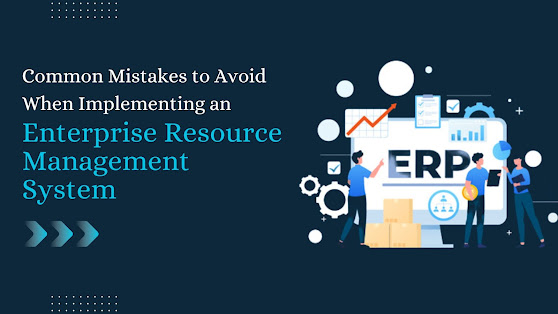Common Mistakes to Avoid When Implementing an Enterprise Resource Management System
Enterprise Resource Planning (ERP) solutions are critical tools for businesses that need to manage their resources efficiently. An ERP system provides an integrated view of an organization's operations and allows managers to make informed decisions about the allocation of resources.
However, implementing an ERP system is not an easy task, and many companies make common mistakes that can cost them dearly. In this blog post, we'll look at some of the common mistakes to avoid when implementing an Enterprise Resource Management System (ERMS).
1. Not Defining Clear Goals and Objectives
Before implementing an ERP system, it's essential to define clear goals and objectives for the system. This will help you select the right ERP solution and ensure that it meets your specific needs. It's important to involve all stakeholders in this process to ensure that everyone's needs are addressed.
2. Underestimating the Cost and Resources Required
Implementing an enterprise resource planning system can be expensive and time-consuming. Many companies make the mistake of underestimating the cost and resources required to implement an ERP system. This can lead to delays, cost overruns, and even project failure. To avoid this, it's essential to conduct a thorough analysis of the costs and resources required before starting the project.
3. Not Choosing the Right ERP Solution
There are many ERP solutions available in the market, and choosing the right one can be a daunting task. Many companies make the mistake of selecting an ERP solution based solely on cost or brand name. This can be a costly mistake as the selected solution may not meet the company's specific needs. It's essential to evaluate multiple ERP solutions and select the one that best meets your organization's requirements.
4. Lack of Employee Training
Implementing an ERP system requires significant changes to an organization's processes and workflows. Employees need to be trained on the new system to ensure its successful adoption. Many companies make the mistake of not providing adequate training to their employees. This can lead to low adoption rates, user frustration, and decreased productivity. It's crucial to invest in employee training to ensure a successful ERP implementation.
5. Poor Data Quality
ERP systems rely on accurate and up-to-date data to function correctly. Many companies make the mistake of not addressing data quality issues before implementing an ERP system. This can lead to incorrect data being entered into the system, which can result in inaccurate reporting, delayed decision-making, and increased costs. It's essential to address data quality issues before implementing an ERP system to ensure accurate reporting and decision-making.
In
conclusion, implementing an ERP system can be a daunting task, but avoiding
these common mistakes can increase the chances of success. It's essential to
define clear goals and objectives, estimate the cost and resources required,
choose the right ERP solution, provide adequate employee training, and address
data quality issues. By avoiding these common mistakes, companies can reap the
benefits of an ERP system, including improved efficiency, productivity, and
decision-making.




Comments
Post a Comment